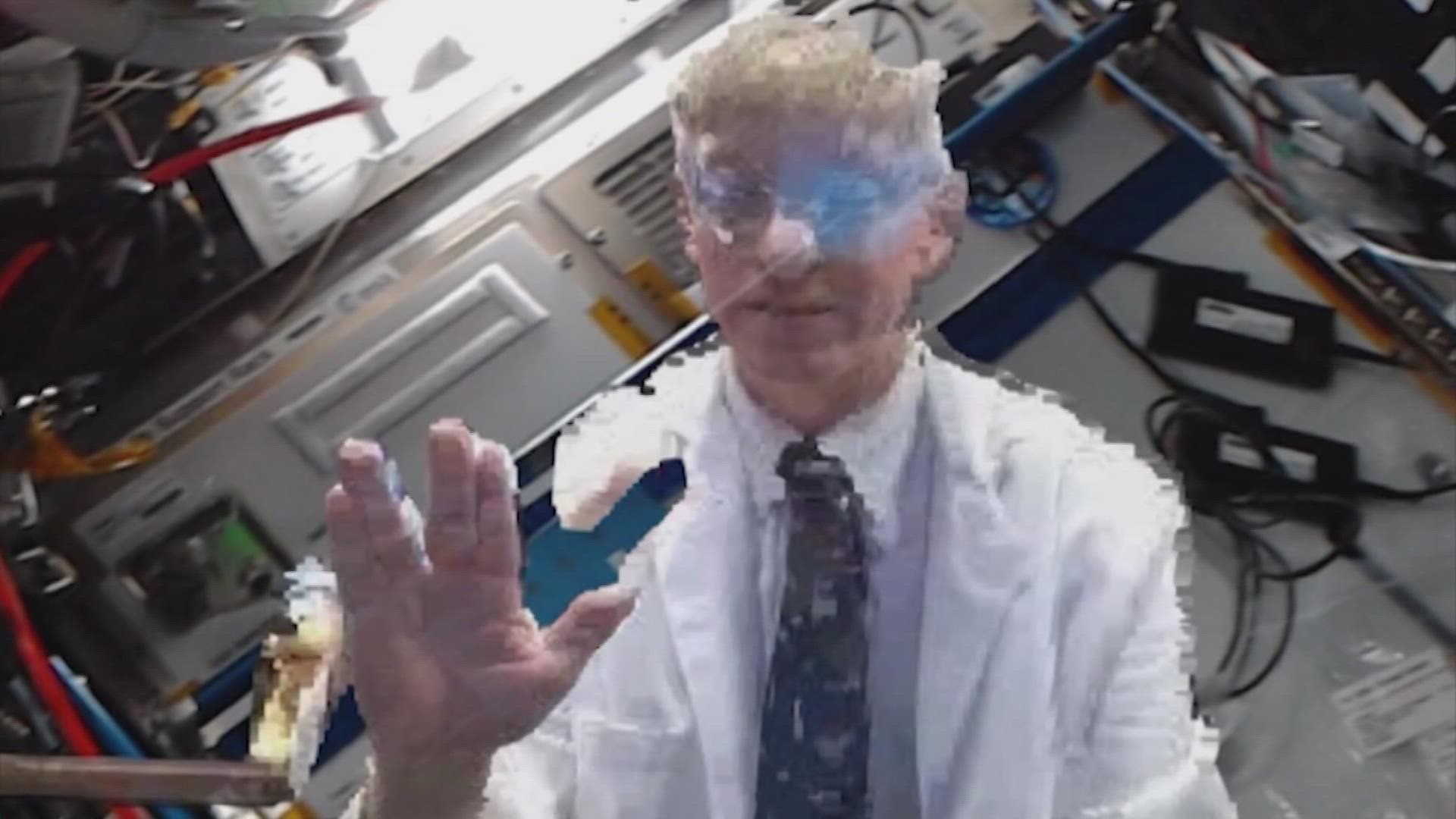HOUSTON — Holographic technology from a company right here in Houston might be in your hands before too long.
It sounds like something straight out of science fiction, but one of the men leading the way in this type of technology says it's only the beginning.
Fernando de la Pena, president of Aexa Aerospace, demonstrated the technology by transporting himself as a hologram across the of his office.
However, transporting himself across a room is one thing. Transporting someone like Dr. Josef Schmid to the International Space Station is something else altogether.
“He was at mission control, and moments later he was at the station,” de la Pena said. “He was the first 'holonaut' – combination hologram and astronaut. He was the first holonaut in human history."
The historic moment was a long time coming for de la Pena, a former NASA contractor himself, who left the agency to start Aexa 10 years ago.
“I had a vision. This is going to be a line of business like the way the internet transformed everything in the 1990s. So that's why I adopted the technology, and we started working on the technology in 2016." he said.
De la Pena says hologram technology will be crucial as space travel expands, heading back to the moon and eventually beyond.
“Here on earth, if something goes wrong with the launch or something, we have 10,000 people working on that,” he said. “If they're on Mars and something goes wrong, there are only six people. The possibility of holoporting an expert is going to be part of this mission."
The holograms are also expected to evolve through what's known as haptics – the technology of transmitting and understanding information though touch.
"Including haptics…and that's part of phase two for the project. The physician at mission control will be able to touch the crewmember, the astronaut and say okay, your lymph nodes are swollen. They will have some feedback, touching that holographic representation of the astronaut,” he said.
And even those of us who aren't likely to ever leave earth may find ourselves benefitting from the technology.
“Imagine a war fighter deployed overseas-just having dinner with their families, enjoying that time, playing a game, interacting with their kids,” he said.
Ae la Pena says this future is coming at us even faster than we think. He believes some early consumer level forms of hologram technology could be available to the public by the end of the year.

